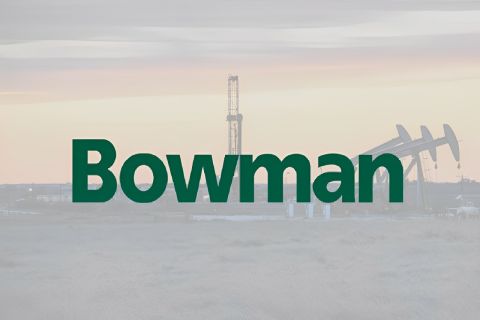
After bouncing back the week of May 28, natural gas liquid (NGL) prices remain fairly stable this week as the shoulder season continues to trudge ahead, placing a bit of downward pressure on NGL prices. But both hubs saw slights moves from both propane and ethane alike.
Despite the lack of heating demand and rising stock levels, propane prices dropped only slightly due to the continued strong support from liquefied petroleum gas exports. The Mont Belvieu price fell 5% to 92¢ per gallon (/gal), its lowest level since it was 91¢/gal the first week of April. The Conway price decreased 3% to 86¢/gal, the first dip in value in nearly two months.
Ethane prices took a more interesting turn, moving in opposite directions. Conway prices improved by more than 3% to 21¢/gal, a sign that the market is rebalancing from the tumble it took a few weeks ago. But, Mont Belvieu ethane took a dive, dropping 4% to 29¢/gal. The market has been plagued by steam cracker outages—the predominate demand source for ethane—reducing demand significantly.
C5+ also took a hit this week, experiencing a price drop at both hubs, falling 3% to $1.98/gal at Conway—its lowest price since October 3, 2012— and dropping nearly 4% to $2.01/gal at Mont Belvieu.
Butane took a page out of ethane’s book and moved in opposite directions at the hubs for the second time in as many weeks, but only slightly. This week as the Mont Belvieu price decreased 3% to $1.24/gal, the Conway price increased less than 1% to $1.17/gal. Isobutane was the only relatively stable NGL at both hubs with the Conway price remaining unchanged with a slight increase of less than 1% to $1.18/gal. Mont Belvieu isobutane barely moved remaining at $1.27/gal.
Frac spread margins were on par with last week, thanks, in part, to less than the 1% price gain for natural gas. The theoretical NGL bbl. price fell 1% at Conway to $36.55/bbl. with a 2% drop in margin to $21.91/bbl., while the Mont Belvieu bbl. price dropped 1% to $38.89/bbl. with a 3% drop in margin to $23.59/bbl.
The most profitable NGL to make at both hubs was C5+ at $1.54/gal at Conway and $1.55/gal at Mont Belvieu. This was followed, in order, by isobutane at 78¢/gal at Conway and 85¢/gal at Mont Belvieu; butane at 74¢/gal at Conway and 80¢/gal at Mont Belvieu; propane at 50¢/gal at Conway and 54¢/gal at Mont Belvieu; and ethane at negative 5¢/gal at Conway and 1¢/gal at Mont Belvieu.
Again this week, natural gas prices remained relatively strong and hovered around the $4.00 per million Btu range. After nearly a decade of fluctuation, natural gas prices are expected to stabilize, partly due to U.S. gas exports. According to Barclays “Energy Research Outlook” report, gas prices surged after news broke that the U.S. Department of Energy announced its approval of Freeport LNG’s application to export liquefied natural gas to countries that do not have a free trade agreement with the U.S.
“The balance of 2013 gained 6% week over week, while calendars 2017-20 gained 8% on average for the week,” the report said. “We caution that there could be further rallying of prices for calendars 2017 and 2018 if more approvals are announced,” according to the report.
Gas prices are also getting a boost from increased demand and exports to Mexico, according to Barclays “U.S. Natural Gas Focus” report.
“Exports of U.S. gas to Mexico have doubled in the past three years,” the report added. “Continued growth of Mexican gas demand, coupled with a wave of pipeline capacity expansions, promises to siphon increasing amounts of gas from the US.”
According to the Energy Information Administration, natural gas storage levels rose 88 billion cubic feet to 2.141 trillion cubic feet (Tcf) the week of May 24 from 2.053 Tcf the previous week. This was 23% below the 2.805 Tcf figure posted last year at the same time and 4% below the five-year average of 2.229 Tcf.
The National Weather Service’s forecast for this week anticipates much warmer-than-normal temperatures throughout the East Coast as well as the West Coast. This is in sharp contrast to the anticipated cooler-than-normal temperatures throughout the Midwest and Gulf Coast.
Recommended Reading
VTX Energy Quickly Ramps to 42,000 bbl/d in Southern Delaware Basin
2024-09-24 - VTX Energy’s founder was previously among the leadership that built and sold an adjacent southern Delaware operator, Brigham Resources, for $2.6 billion.
US Drillers Cut Oil, Gas Rigs for Third Week in a Row
2024-10-04 - The oil and gas rig count fell by two to 585 in the week to Oct. 4.
EY: How AI Can Transform Subsurface Operations
2024-10-10 - The inherent complexity of subsurface data and the need to make swift decisions demands a tailored approach.
Bowman Consulting to Manage, Monitor Delaware Basin Wells
2024-10-14 - Bowman Consulting Group’s scope of work includes conducting detailed field surveys of above-ground infrastructure assets across well sites of up to to 8 acres.
E&P Highlights: Oct. 7, 2024
2024-10-07 - Here’s a roundup of the latest E&P headlines, including a major announcement from BP and large contracts in the Middle East.
Comments
Add new comment
This conversation is moderated according to Hart Energy community rules. Please read the rules before joining the discussion. If you’re experiencing any technical problems, please contact our customer care team.




